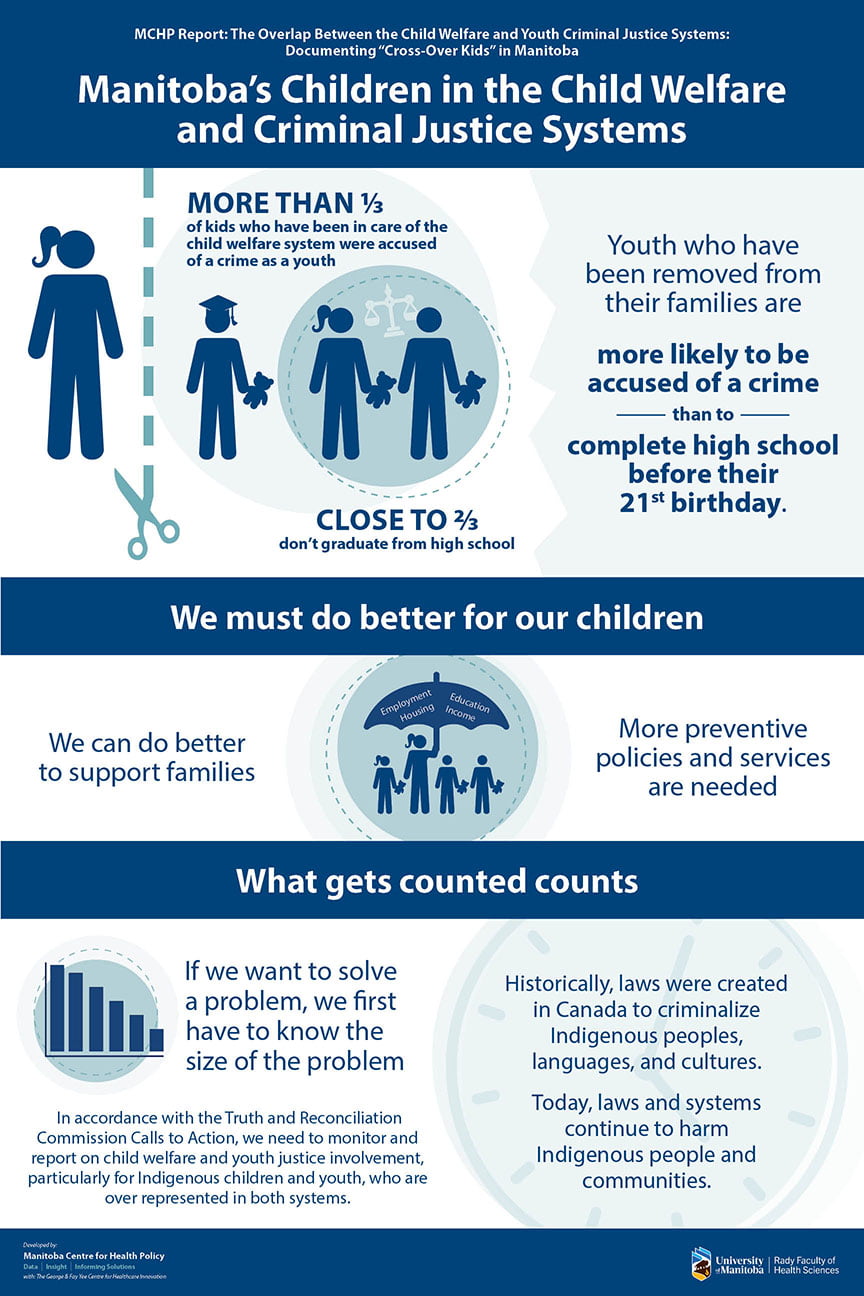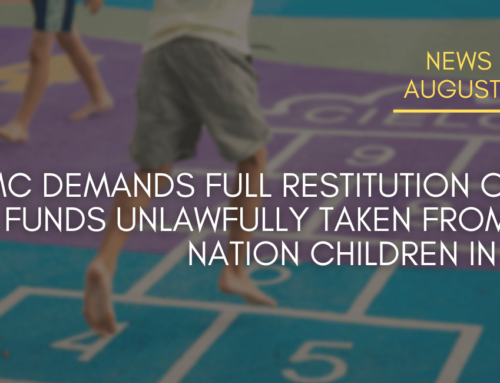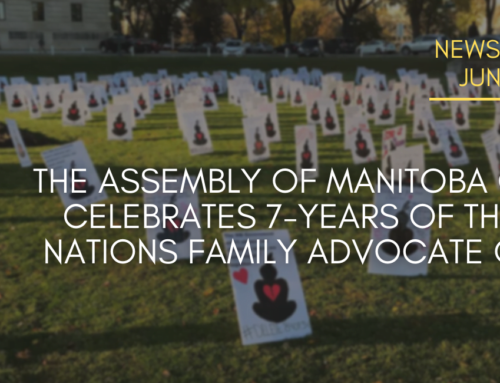 One of the strongest predictors of whether a Manitoba youth will get into trouble with the law is being in the care of the child welfare system, a new study reveals.
One of the strongest predictors of whether a Manitoba youth will get into trouble with the law is being in the care of the child welfare system, a new study reveals.
The study by the Manitoba Centre for Health Policy (MCHP) in the University of Manitoba’s Rady Faculty of Health Sciences focused on a cohort of Manitobans who were born in 1994.
It found that more than one-third of children who spent any time in the care of Child and Family Services (CFS) were charged with at least one crime in their youth (between ages 12 and 17).
By the age of 21, nearly half of those who had spent any time in care had been charged with a criminal offence.
In fact, a 21-year-old who had spent any time in care was more likely to have been charged with a crime than to have completed high school.
“We found a very strong association between being taken into CFS care and becoming involved in the youth criminal justice system,” said the study’s lead author, Dr. Marni Brownell, professor of community health sciences and senior research scientist/associate director of research at MCHP.
“This does not prove that being in care causes justice system involvement. But it quantifies the substantial overlap between the two systems, which Indigenous leaders have been talking about for decades.”
The study showed that Indigenous children and youth are greatly over-represented in both systems. It found that First Nation youth were many times more likely to be involved in both systems than other youth in the province.
Manitoba has the highest rate of children in care of any Canadian province. It also has the highest rate of youth incarceration. The Truth and Reconciliation Commission of Canada has called on governments to address the over-representation of Indigenous children in these systems.
Brownell’s team focused on more than 18,000 children who were born in 1994. The researchers conducted the study by analyzing de-identified (anonymous) child welfare and justice system data stored in a repository at MCHP.
The data showed that the more times a child was taken into care, the higher his or her risk of being charged with a crime later on. A child placed in a group home was more likely to be charged with a crime as a youth than a child placed with foster parents.
“Children in care with mental disorders were also more likely to be charged with a crime, which could suggest that these interactions with the justice system point to unaddressed mental health issues,” Brownell said.
Almost half of the charges laid against youth in care from the 1994 cohort were for breaches such as drinking alcohol or staying out past curfew while under certain restrictions, such as probation – teenage activities that are not usually considered criminal.
“Part of the problem is that being criminally charged for these administrative offences can send CFS kids into a downward spiral of justice system involvement,” Brownell said.
The study team also looked at other birth cohorts to detect trends. Over time, the two-system overlap worsened: children who had been in care made up an increasing proportion of youth charged with a crime, from 28 per cent in the 1988 cohort to 45 per cent in the 1998 cohort.
The disproportionate involvement of First Nation youth also increased. First Nation youth went from making up 41 per cent of all Manitoba youth with criminal charges in the 1988 cohort to 54 per cent in the 1998 cohort.
The study includes input from First Nation youth. One is quoted as saying, “Governments need to be more aware of preventions, rather than just punishments.”
The researchers agree. Their recommendations include:
- Increase funding, supports and services to prevent children from being removed from their families and placed in care.
- Recognize that Indigenous children are greatly over-represented in these systems because of factors that include historical and ongoing colonial policies, systemic racism, chronic underfunding of services to Indigenous communities, and social determinants such as poverty, inadequate housing, and food and water insecurity.
- Acknowledge the resilience of Indigenous people and empower them to deliver their own services, in line with their own values and policies.
- Continue to monitor and report on the two-system overlap and other key statistics related to child welfare and youth criminal justice.
The full study is available here: http://umanitoba.ca/faculties/health_sciences/medicine/units/chs/departmental_units/mchp/Landing-JustCare.html






